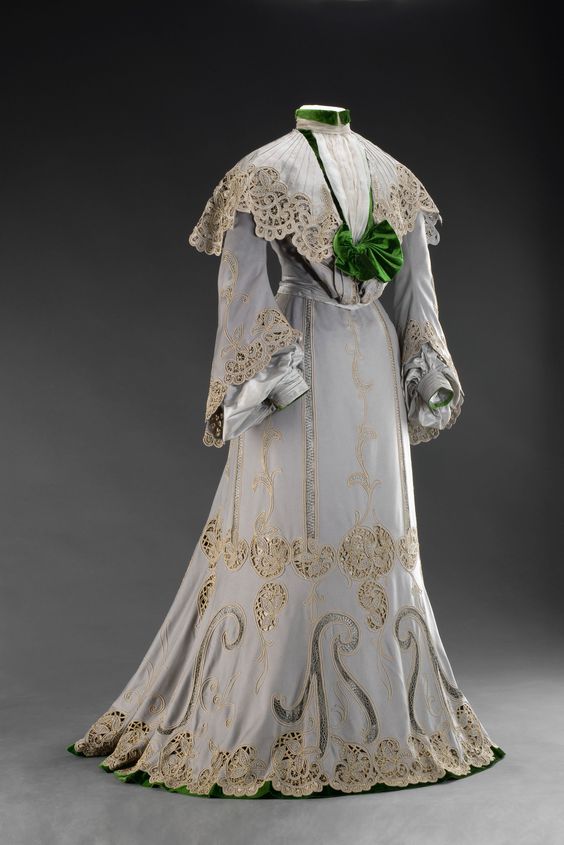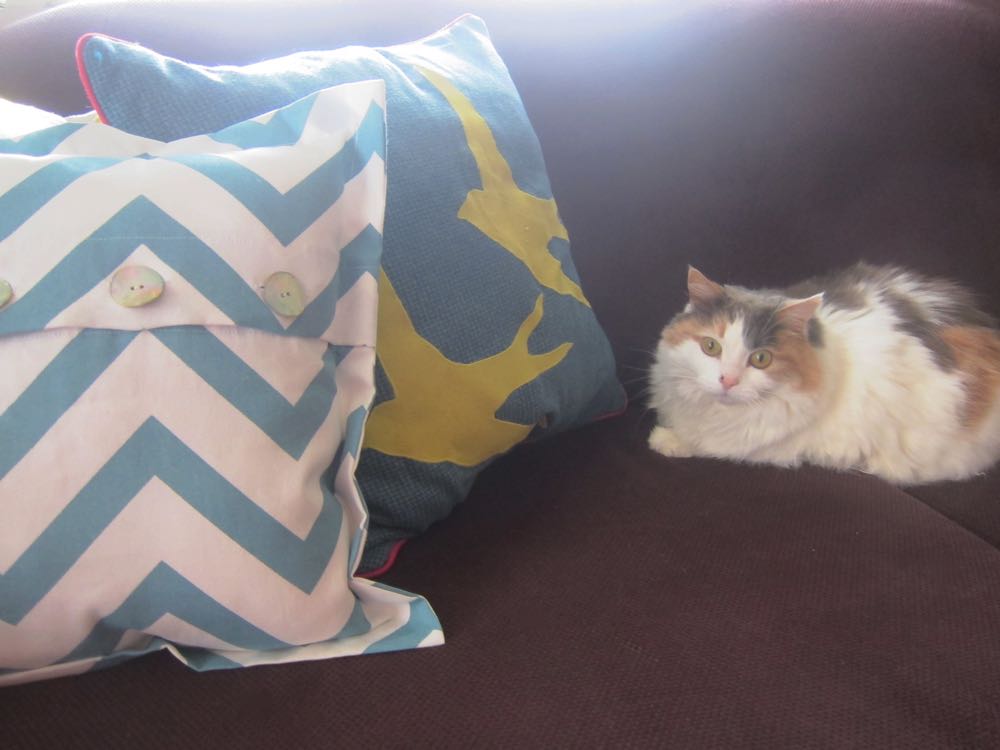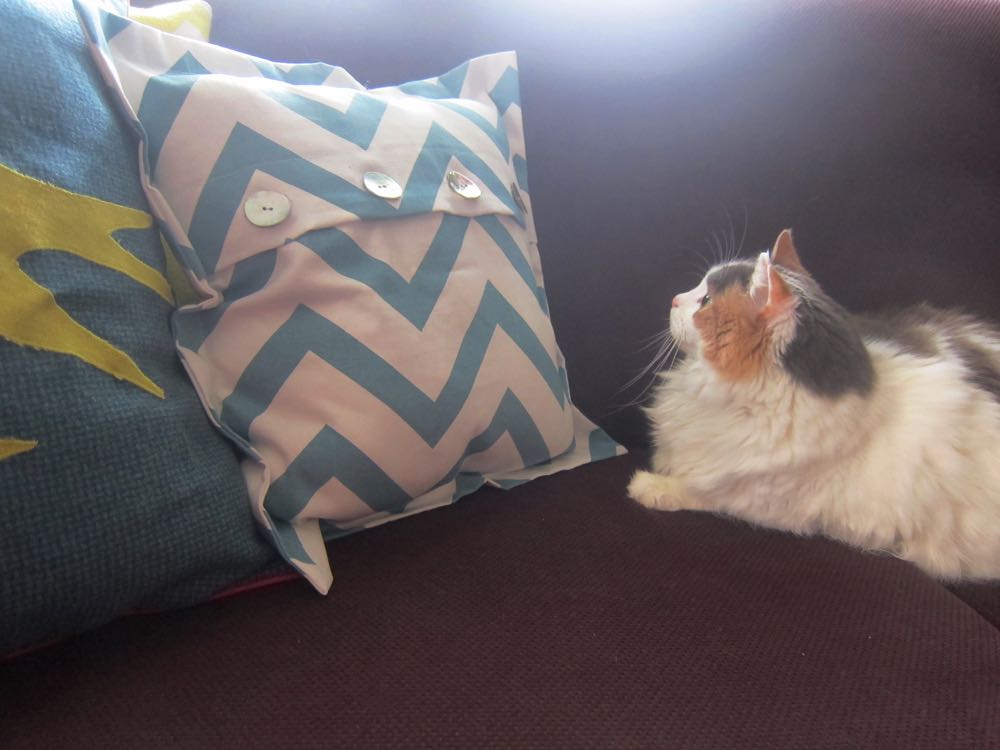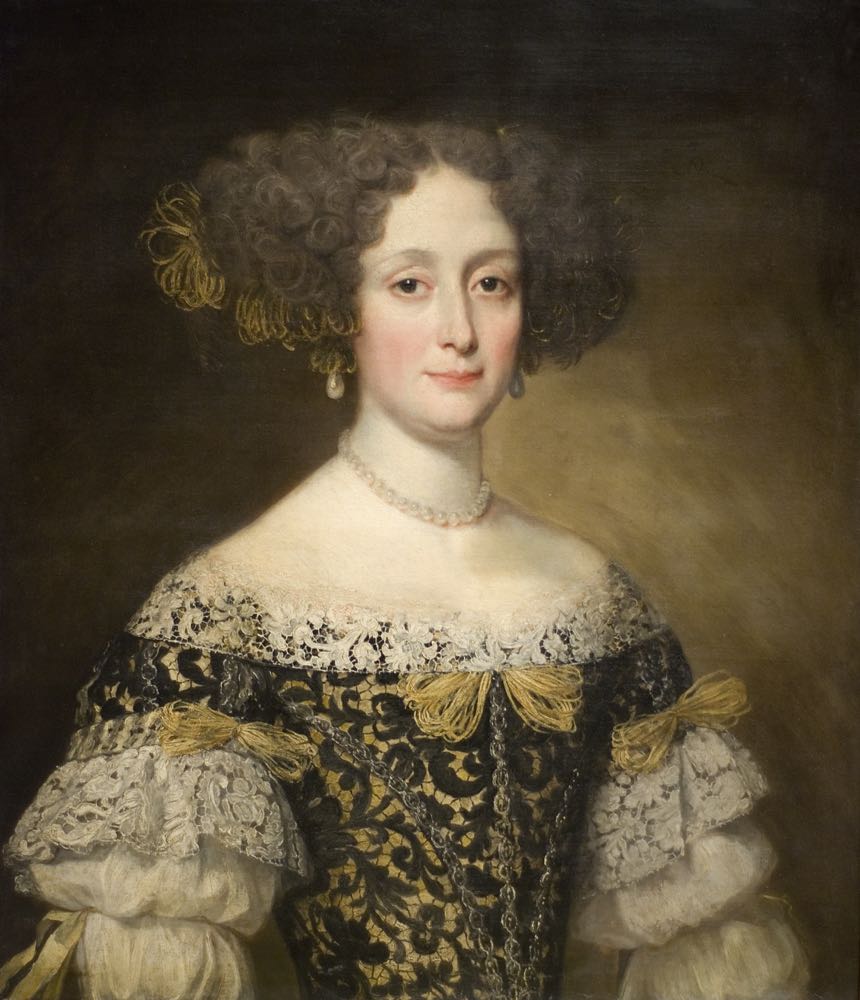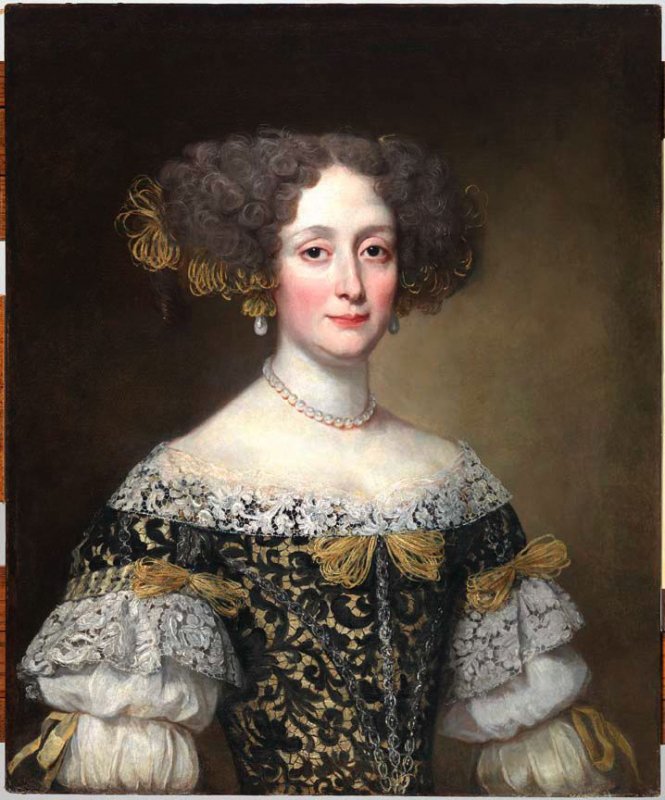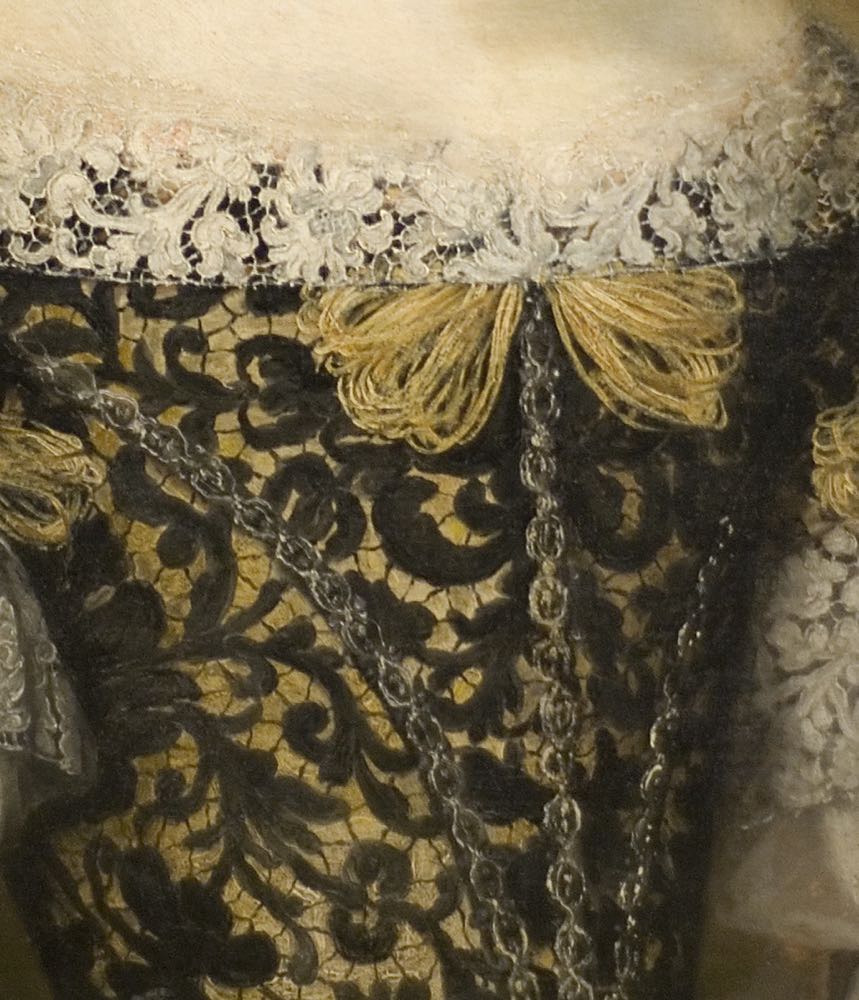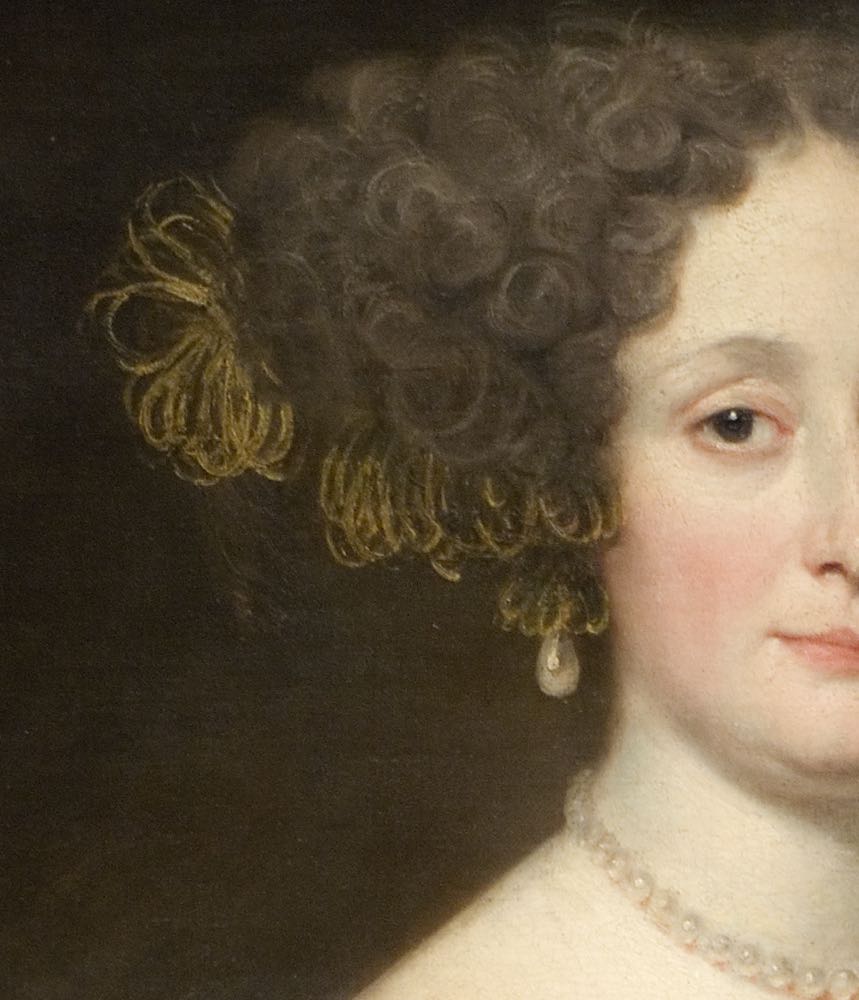Last week’s Rate the Dress was an 1880s maybe-Western dress in ochre and blue. It evoked a lively discussion, and a mostly extremely positive reaction – minus a points or two from most of you for the bead trim. Just a couple people really didn’t like it (Daniel called it a digestive biscuit of a dress), though no-one could dispute the skill of the dressmaker.
Overall, the dress came in at a rather nice, if not astonishingly fabulous, 8.4 out of 10.
I’m not sure if I loved the dress, and while I didn’t like the beads aesthetically, I liked them intellectually, as a representation of mica, and the bobble trim on sombrero and other Southwestern wear.
This week lets go all the way back to the 1670s, and look at Anna Caffarelli Minuttiba.
We actually have two slightly different views of the painting to consider, one, a little warmer and more muted:
And another with higher contrasts, possibly after conservation, possibly just with the photo temperature adjusted significantly:
I haven’t been able to track down any information on who Anna was, but as Voet was one of the most fashionable portrait painters of second half of the 17th century, active in both France and Italy, she must have been a wealthy Italian noblewoman, arts patron, or noted beauty.
She wears the long, heavily boned, off-the-shoulder bodice fashionable in the 1670s, decorated with black lace over a pale gold ground, the seams embellished with metallic passementerie trim. Bows of narrow blonde-gold cord ornament the neck and sleeves. Over the bodice she wears a modesty panel of white lace, with matching ruffles of the same lace at the sleeves.
The full sleeves of her white linen chemise are caught up into puffs with silk ribbons in pale yellow.
Anna’s ‘hurluburlu’ hairstyle is either decorated with dyed and curled ostrich feathers, or with loops of the same narrow ornamental cord that forms the bows on the bodice. It’s hard to make out exactly, but her earrings may have little tassels of the same cording, from which the large pearl drops dangle.
Voet rarely painted full length portraits of his subjects, but if he had, it would probably reveal that Anna’s full dress consisted of an overskirt which matched the bodice, pulled up to reveal a contrasting or coordinating petticoat in equally rich fabric, as seen in this portrait of Princess Teresa Pamphilj Cybo (although I suspect Anna’s would have been a little more restrained).
I’ve had this RTD image scheduled for weeks, when, in an amazing bit of synchronicity, Voet’s depiction of the hurluburlu hairstyle Anna sports popped up as a topic of discussion in the HSF Facebook group. It is obviously the time for 1670s fashions!
What do you think?
Rate the Dress on a Scale of 1 to 10

